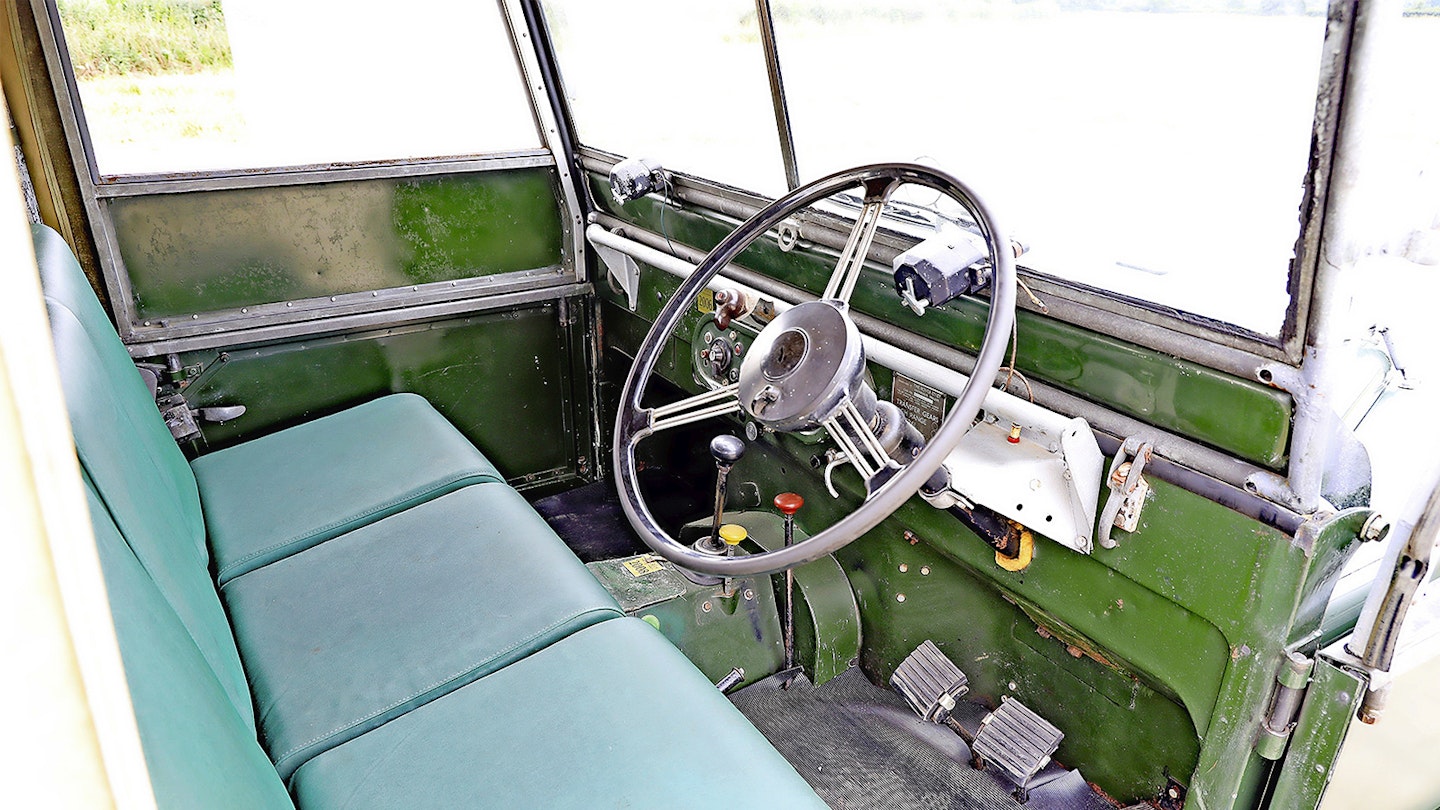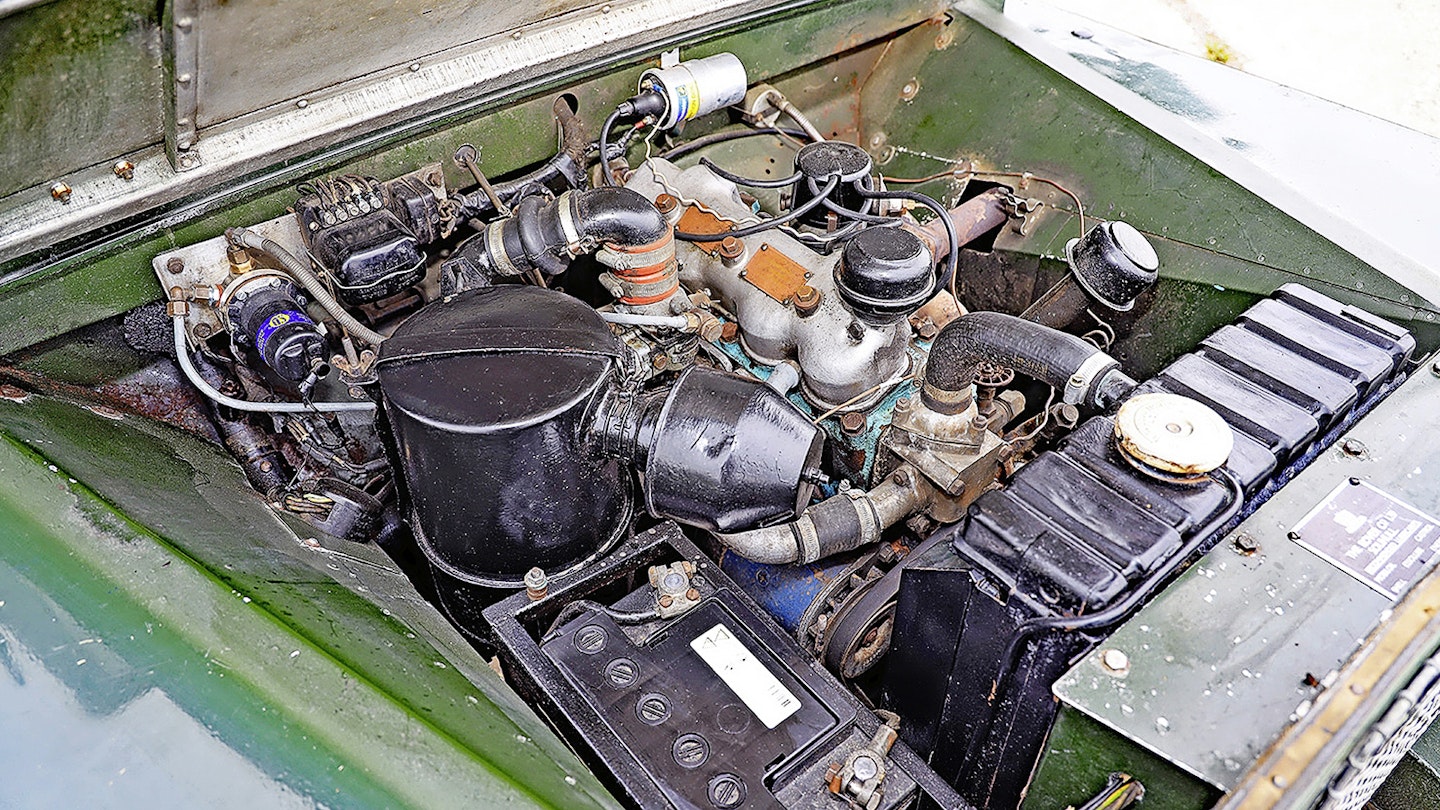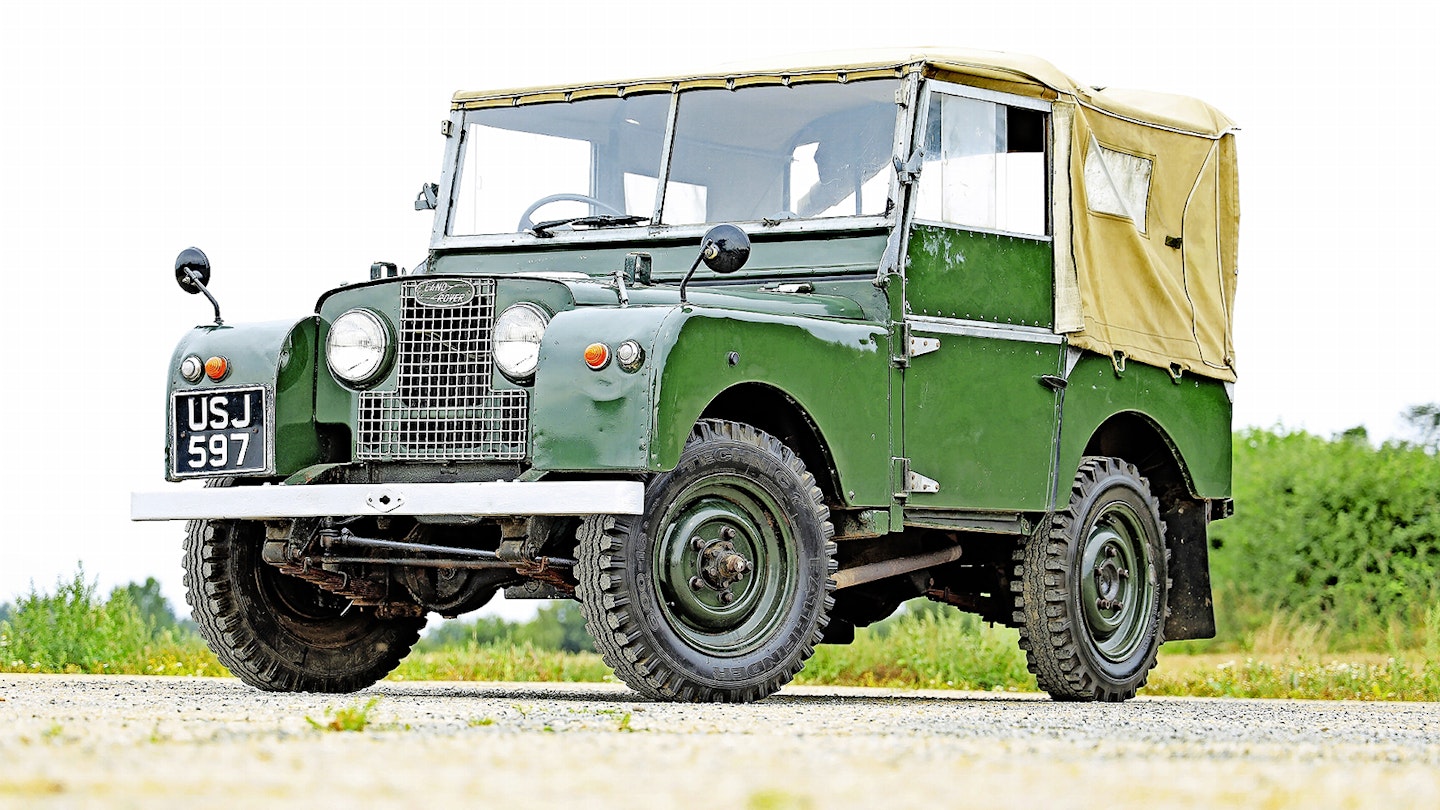This Land Rover appeared just three years after the model was launched and seems an honest example, reckons Richard Gunn

This 1951 Series I ticks a lot of boxes for age and originality. While there’s minimal history with it, it is believed to be mainly untouched, and it certainly has the appearance of a vehicle that has been used over many years while also being cared for. Naturally, some work has been carried out, but the Bronze Green bodywork looks straight and in presentable condition, albeit inevitably with a few scars from almost 70 years of existence. There’s some aluminium corrosion on the offside rear wing, while the paint on the rear valance is quite cracked and rough. Other blemishes include small bubbles of corrosion and scratches across the body, plus a few other marks. There are no dents or visible accident damage.
Everything appears structurally solid. The chassis has been undersealed, but the coating is getting flaky in some spots. The chassis is better towards the front, where the obligatory oil leakage from the engine has given everything a protective coating. Towards the rear, it’s mainly surface corrosion. Nothing seems crusty to the point where it would worry an MoT tester, but the rear suspension has quite a coating of rust. A new fuel tank was fitted recently.
The canvas hood is clean but has three small stress splits at the front and sides. Chunky Technic Pathfinder 6.00-16 tyres are up front while Avon Traction Mileage items are at the rear. They have plenty of tread but the rubber is showing some light cracking on the offside rear and nearside front. The other two tyres are much better, but do give the impression of having been on the Land Rover for a long time. There’s no date stamp on the offside or nearside rear, or offside front, as far as I could see. The nearside front dates from 2002.

The utilitarian interior also has its usage and age marks, including areas where the paint has been touched in with a slightly mismatched shade most noticeable either side of the transmission tunnel, but the cabin remains largely standard aside from a period Lucas indicator switch. The vinyl seats, front and rear, have been neatly retrimmed relatively recently, but it’s not clear when. It should be noted that the odometer hasn’t worked for several years.
The engine bay matches the rest of the car – original in appearance, but clearly a working environment. It all looks standard, including some ancient wiring, and usefully accessible and uncomplicated. Areas such as the top of the radiator and the air filter have been repainted.
It drives as expected. The brakes are positive enough but require some heft, and the steering is heavy at slower speeds. The gearbox rewards more leisurely selection and won’t let you rush through the ratios.
Series I Land Rovers, especially the earliest ones, are desirable and demand high prices; even more so if they’re in as-built form – as this one largely is. It should be noted that its last MoT was in 2013 and, while one is no longer necessary, a fresh test would reassure that it’s safe. Its ideal new home would be with a hardcore and mechanically sympathetic enthusiast.
This Land Rover is one of four Ads on Test in the latest issue ofClassic Cars.
Engine 1595cc, 4-cyl, IOE, Solex carburettor Power 50bhp @ 4000rpm Torque 80lb ft @ 2000rpm Performance 0-60mph: 65.3sec; top speed: 62mph; Fuel consumption 24-38mpg Length 3353mm Width 1549mm
